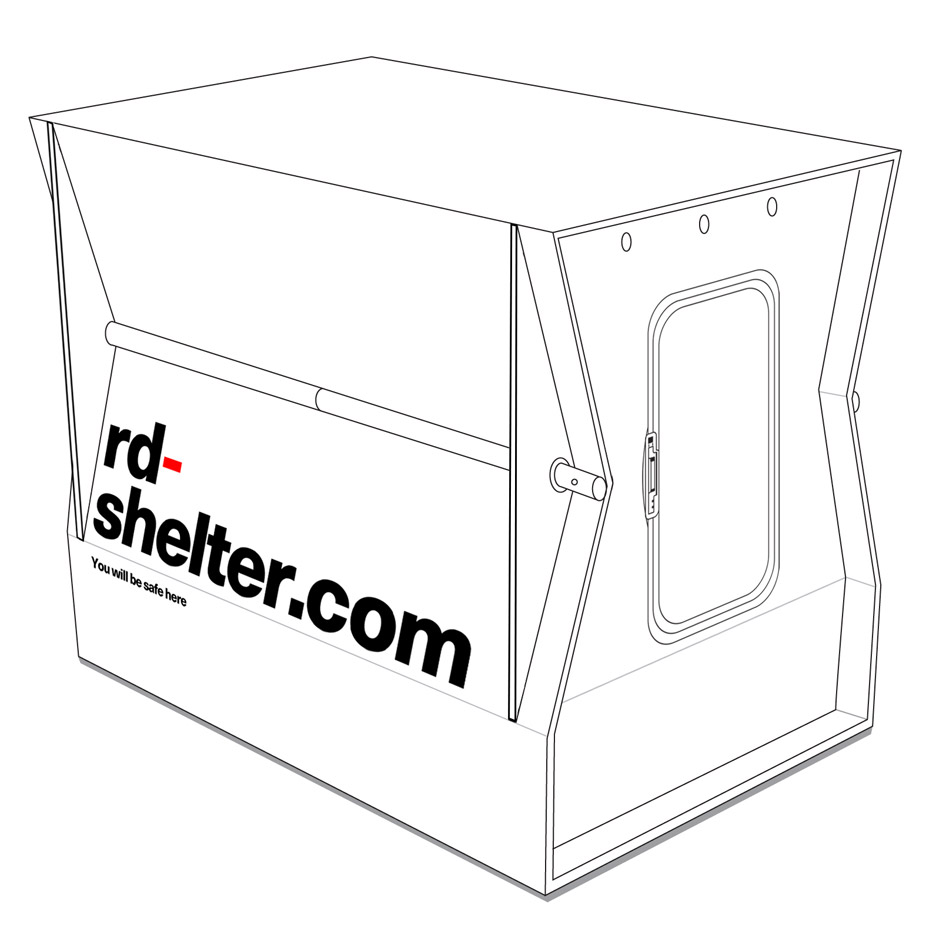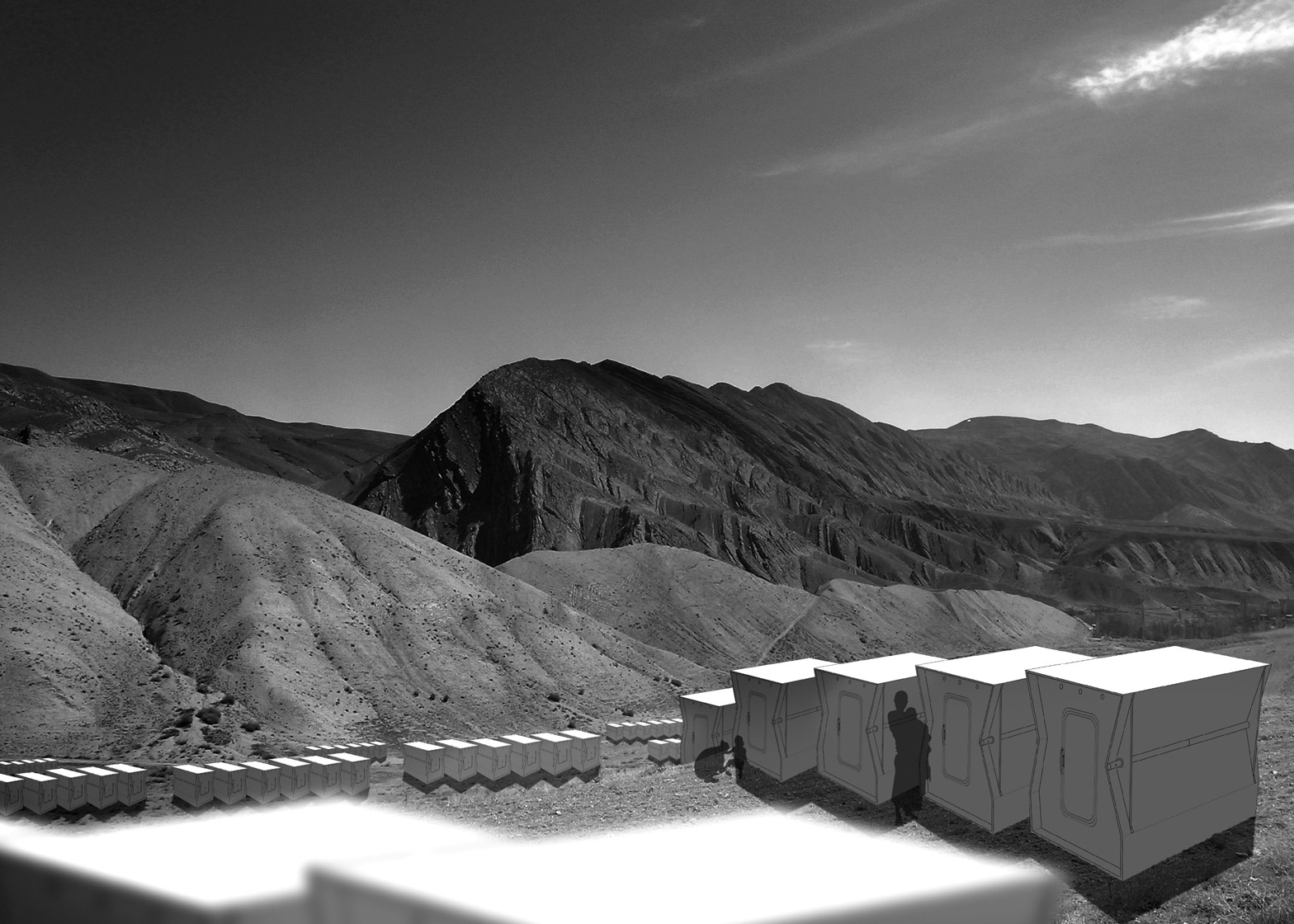Scottish design agency Suisse is raising funds to develop its RD-Shelter prototype, which could be rapidly deployed to house people displaced by war or natural disasters.
The campaign was launched by Suisse founder Paul Gray, who has spent the last seven years perfecting the shelter design.
"Disasters do take many forms; war, famine, crop fail, the fallout from the actions of aggressive dictatorships, landslide, typhoon, extreme weather conditions – the list goes on," said Gray.
"The common ground in every instance is the exposure that those displaced have to endure," he added. "They have to wait too long for the most basic forms of protection. The most basic shelter."

The rapid deployment (RD) shelter is made from fluted polycarbonate – a plastic material often used for roofing. The shelters are opaque, windproof and waterproof, and can house two adults and two children.
The housing locks from the inside, and inhabitants can also store items in the base of the structure.
The RD-Shelter's pinched-in shape means it can be folded down to 25 per cent of its assembled height, allowing it to be stacked for more efficient transportation. According to Gray, it can be constructed without the need for tools or specialist crew, and holds itself up "with nothing more than tension".
Suisse's RD-Shelter is currently still at prototype stage, but Gray is raising funding to consult with materials specialists and develop the design further. He also plans to test it out by sleeping in it himself, and inviting friends and colleagues to do the same.
"I want governments to buy into this," said the designer. "Aid agencies to buy into this. My ideal would be to see these stockpiled all over the world so that, in the immediate circumstance of need there is something that can be done."
"And that should happen immediately," he added. "It should be a rapid response."
Gray is currently seeking a target of £30,000, and at the time of writing had achieved £2,970 of funding. If the RD-shelter reaches its target, economic development agency Scottish Enterprise will also pledge an additional £70,000 to support the campaign.
Humanitarian projects formed one of biggest architecture and design topics of 2015, particularly in response to Europe's ongoing refugee crisis.
Last year, artist Banksy sent materials from his dismantled Dismaland theme park to the Jungle refugee camp near Calais, where it will be used to construct shelters for some of the region's 7,000 refugees.
Building initiative SURI has also designed modular housing that can serve as emergency shelter for refugees, and Ikea put its own flat-pack shelters into production in 2015.

